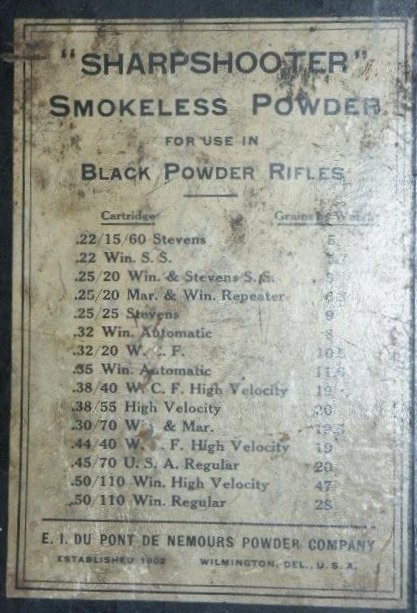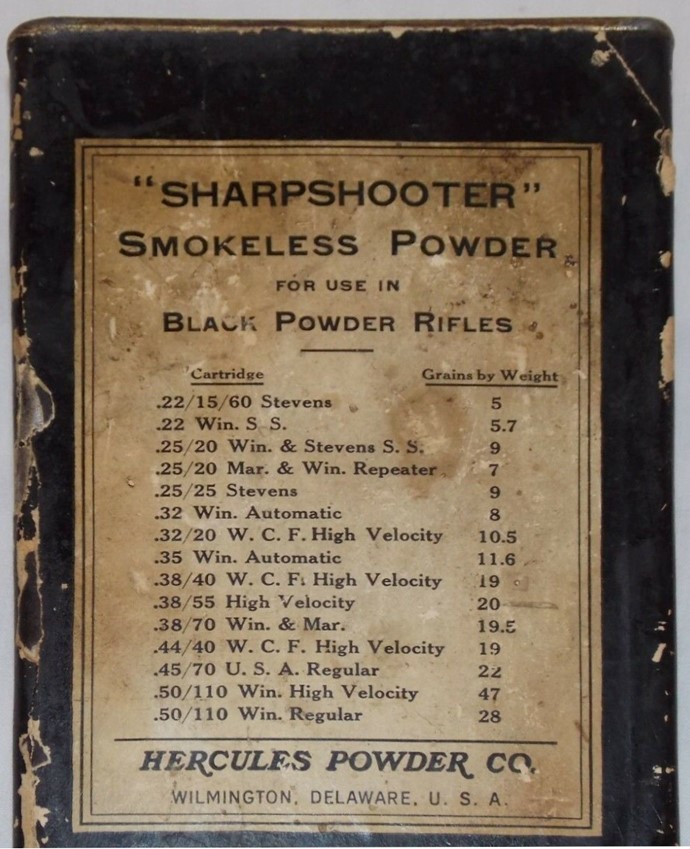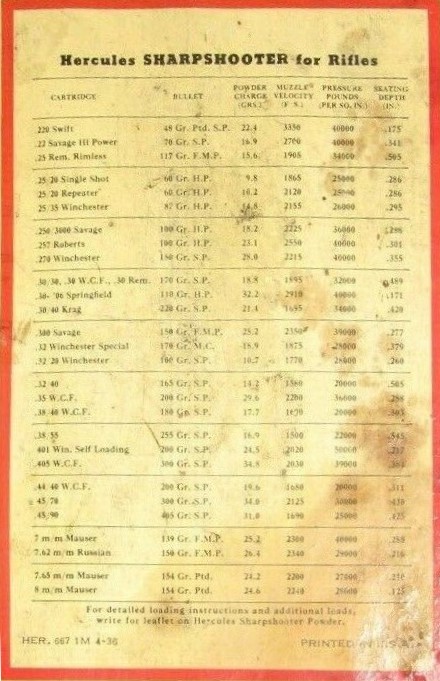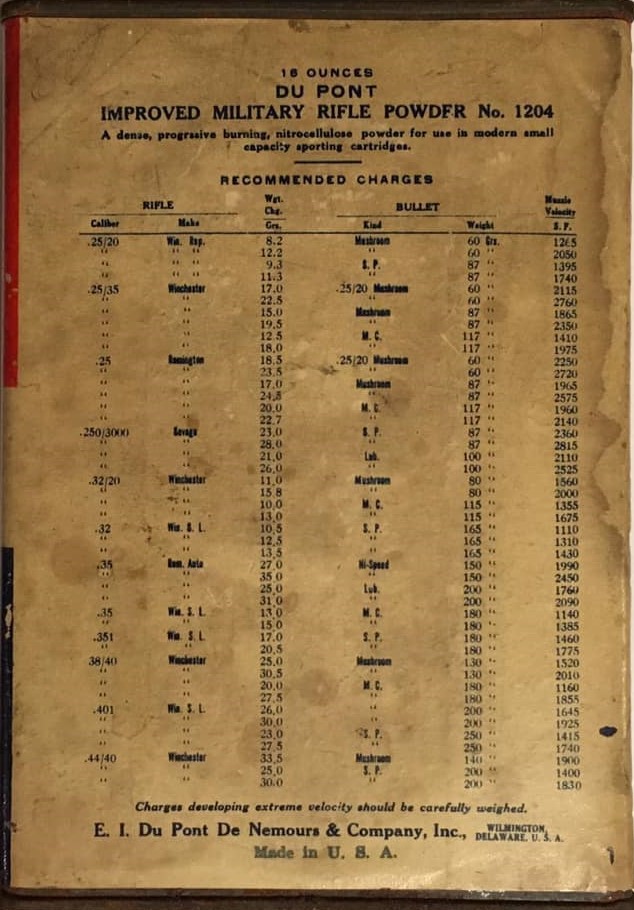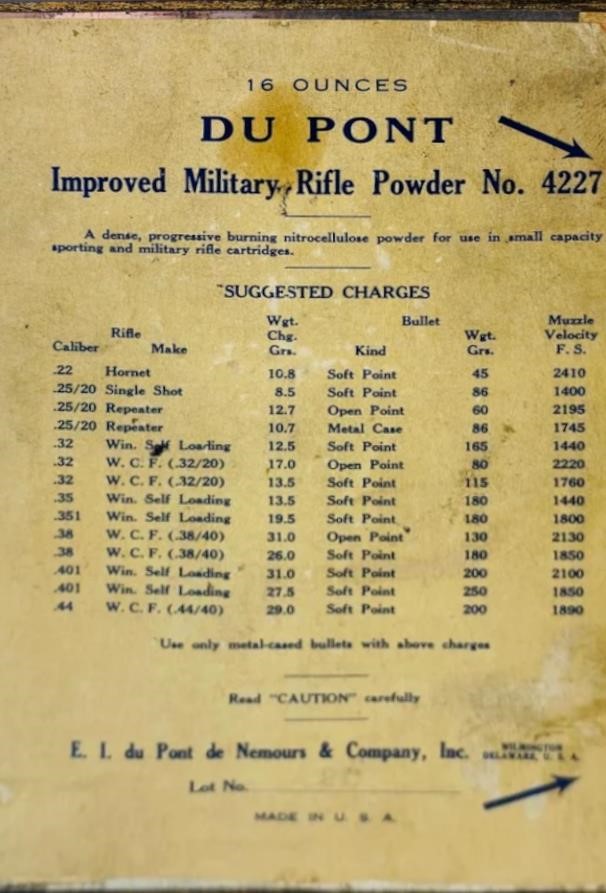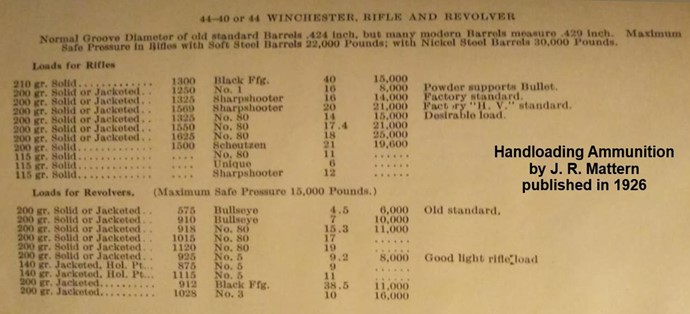I saw this June 1935 dated 2400 powder can and thought I'd share some data. On the load table on the back label it showed that the 44-40 200gr soft point was loaded with 25.4gr and achieved 1,870fps @ 20,000cup. One would have to assume what bore this would be with a .4255" diameter jacked bullet. During my test with a .429" bore and .4255" JSP Winchester bullets, the velocities were always higher than other larger diameter bullets and the pressures lower....of course right?
With that said, my tests results a while back only used 20gr but with a 200gr .429" Speer 4425 JSHP. This is Lyman's max charge for strong action rifles, not to be used in weak action rifles or in revolvers. Basically the same profile as the 44-40 Winchester 200gr...but larger diameter, but again maybe a larger bore than in 1935.
With the 20gr charge the results were close, only 1,672fps @ 18,461cup...room for a little more powder if I ever needed to test again.
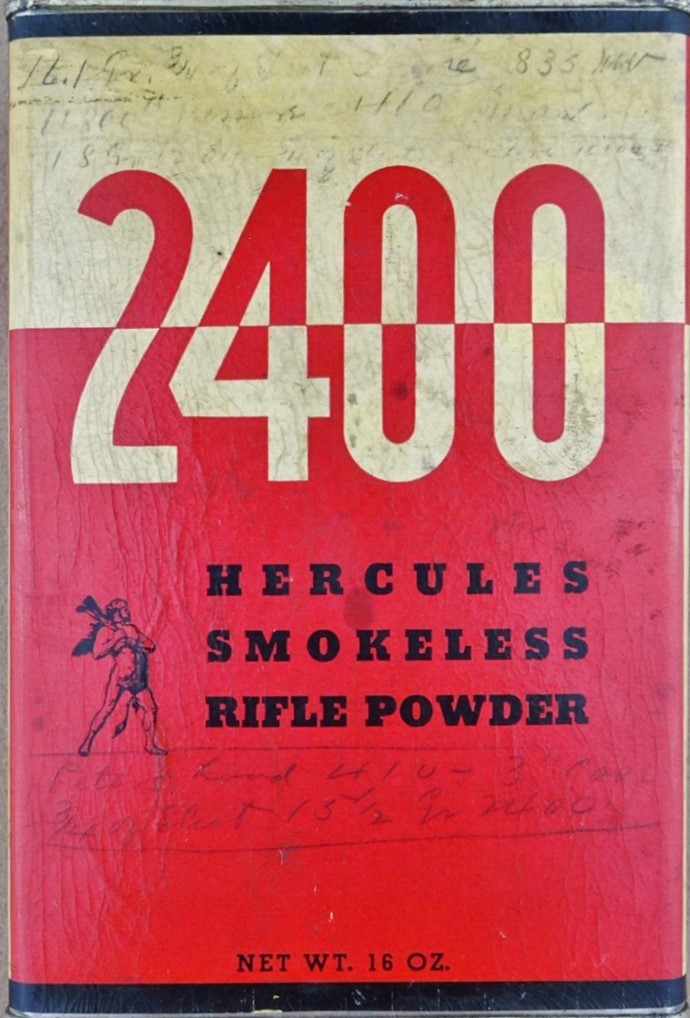
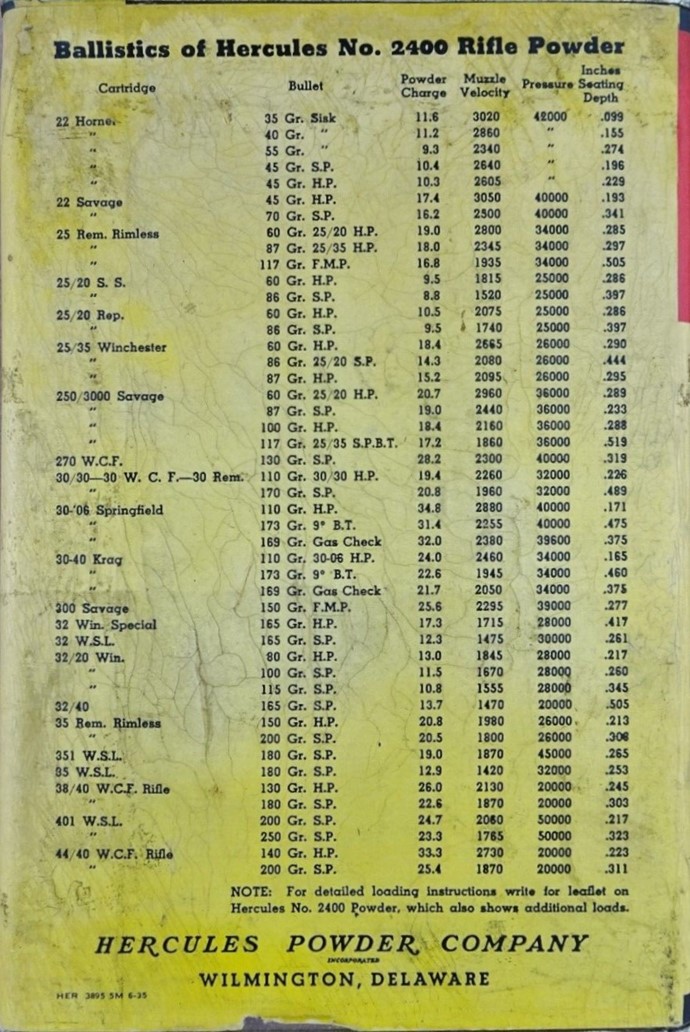
44-40 Website - https://sites.google.com/view/44winchester/chasing-the-44-40



